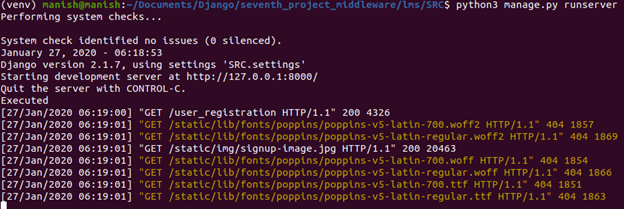Blog Details
| Blog Title: | Django Middleware |
|---|---|
| Blogger: | manishsangu007@gmail.com |
| Image: | View |
| Content: | In this post we will discuss the following.
What is a middleware
When to use middleware
Things to remember when using middleware
Writing some middleware’sMake sure you have a Django project with a url and a view, and that you are able to access that view. Create a file middleware.py in any of your app. I have an app called lms and so I am writing this in books/middleware.py
Middleware can live anywhere on your Python path. __init__(get_response) Middleware factories must accept a get_response argument. You can also initialize some global state for the middleware. Keep in mind a couple of caveats: Django initializes your middleware with only the get_response argument, so you can’t define __init__() as requiring any other arguments. Unlike the __call__() method which is called once per request, __init__() is called only once, when the Web server starts. Activating middleware To activate a middleware component, add it to the MIDDLEWARE list in your Django settings. In MIDDLEWARE, each middleware component is represented by a string: the full Python path to the middleware factory’s class or function name. For example, here’s the default value created by django-admin startproject:
Middleware order and layering During the request phase, before calling the view, Django applies middleware in the order it’s defined in MIDDLEWARE, top-down. You can think of it like an onion: each middleware class is a “layer” that wraps the view, which is in the core of the onion. If the request passes through all the layers of the onion (each one calls get_response to pass the request in to the next layer), all the way to the view at the core, the response will then pass through every layer (in reverse order) on the way back out. If one of the layers decides to short-circuit and return a response without ever calling its get_response, none of the layers of the onion inside that layer (including the view) will see the request or the response. The response will only return through the same layers that the request passed in through.
Now, Make request to any url. This should get printed on runserver console
|



